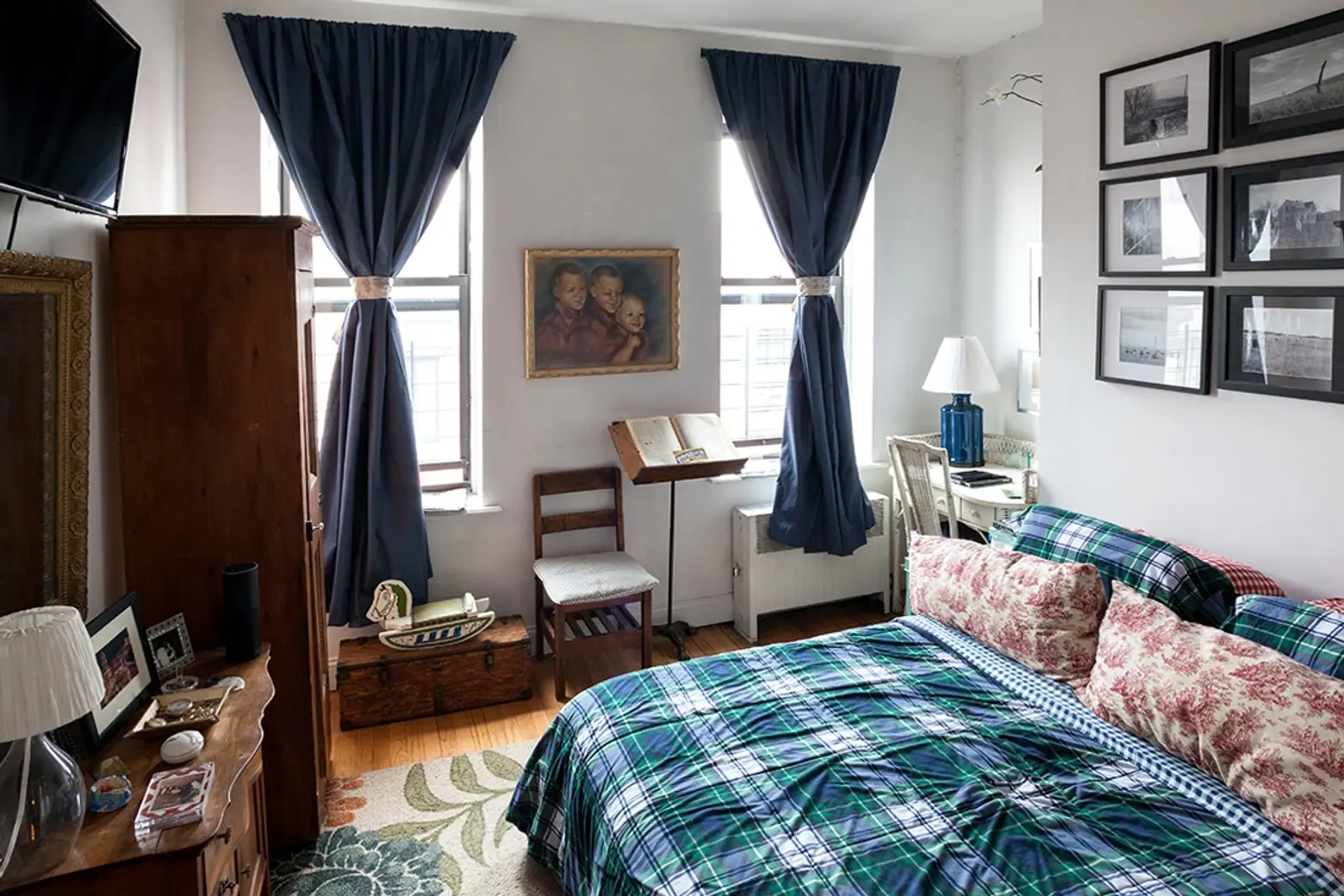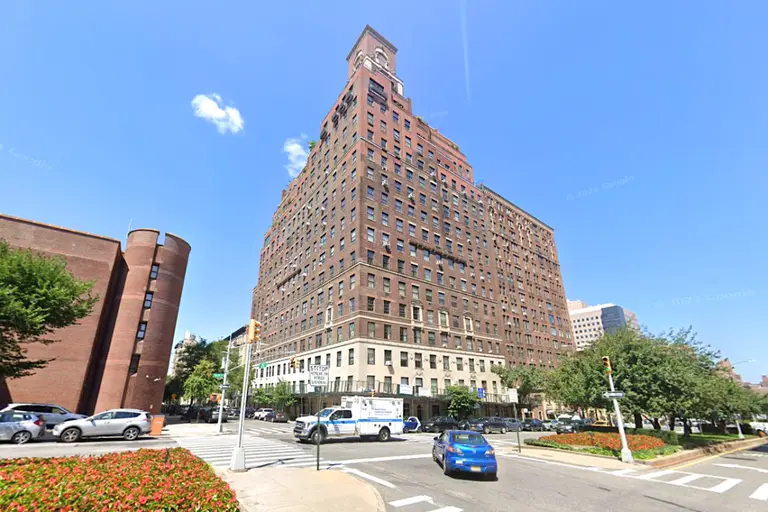6sqft Guide: Everything parents need to know about renting for college-age kids in NYC

Image: Dov Harrington / flickr CC
Living in a college residence might be fun for a year or two, but most college-age kids eventually want to move out. And who can blame them? After all, who wants to show ID to a security guard every time they arrive home, share a room with a stranger, or eat in a cafeteria night after night? In many smaller college towns, sending your kid first and last month’s rent is more than enough to get them out of residence and into their first apartment. In New York City, it’s a bit more complicated.
In most cases, parents need to be directly involved in the housing search and rental process and prepared to come up with a substantial deposit, which can meet or even exceed the money needed to purchase a starter home in many U.S. cities. In order to rent an apartment in New York City, renters typically must come up with first and last month’s rent, a security deposit, and a broker’s fee (the fee is either one month’s rent or anywhere from 10 to 15 percent of the first year’s rent). Also, as a rule, owners and management companies require lease holders to have an established credit history, to make more than 40 times the monthly rent on an annual basis, or to have a guarantor who exceeds these criteria.
This 6sqft guide outlines everything parents need to know before going on the market to rent an apartment for a college-age child, including advice on where to find listings and how to decode them.
Where do I find listings?
You have college-age kids, you likely attended college in the 1980s to early 1990s and likely found your first apartment by scanning advertisements in the local newspaper. This is no longer where one finds apartment listings in most cities and certainly not in New York. First, you’ll need to search a reputable listings site. A reputable listings site is not the apartment category on Craigslist (in fact, most reputable owners and real estate brokers no longer use the site at all). Instead, limit your search to established listings sites, such as City Realty’s site, which includes both fee and no fee apartment listings citywide. We also have a run-down of the top no-fee websites and resources for no-fee NYC rentals here.
What types of rental housing is available?
Once you start exploring listings, you’ll immediately notice that there are several types of rental housing on the market. The main categories are explained below.
No-Fee Rental: This simply means that the owner not renter pays the broker’s fee. Since fees can be high, there is much to be gained by finding a no fee apartment. However, no-fee apartments only represent a small portion of the rental market. If you restrict yourself to no-fee apartments, you will close off potentially great deals.
Rental: If the listing is for a rental, it is generally indicating that the rental is located in a rental building not a condo or co-op building. In general, rentals tend to be more affordable, located in walk-up buildings (these are buildings up to six stories without an elevator), and they are often less selective about approving prospective tenants.
Condo: If the rental is advertised as a condo, the rental is located in a condo building, and you’ll be renting a unit from an individual condo owner. Like all condo properties, the owner owns the apartment as they would own a house or townhouse but pays a monthly fee for access to certain common spaces and/or services.
Co-op: New York City co-ops have a unique structure. When you purchase a co-op, you’re buying stock in a corporation and the building, in turn, leases you a co-op unit on a long-term basis. So, co-ops are comprised of shareholders rather than owners or renters. More importantly, in New York City, co-ops are empowered to create their own rules. For example, some New York City co-ops do not permit renters at all. Those who do typically require approval from the co-op board. Co-ops can also be relatively arbitrary about the basis upon which they approve tenants, even when they are prospective owners. This means that if you’re looking to find an apartment for a college-age child, a co-op will likely be your most difficult target. After all, if someone doesn’t have to rent to a 19-year-old moving into to his or her first apartment, why would they? And don’t try to convince a co-op board that your kid is special. When Madonna let her college-age daughter crash at her Upper West Side co-op (presumably because the pop star’s complex of three townhouses on the Upper East Side wasn’t big enough), residents of the co-op board fought back, arguing that no one under 21 years of age should be permitted to occupy the residence alone.
Cozy? Flex 2? What does it all mean?
In addition to understanding what types of apartments are on the market, it is important to be able to decode New York City housing listings. Below is a short list of key terms:
Cozy means small—smaller than you think.
Fits a double bed means that the room will not fit a queen-size bed or a double bed and other furniture (if this was the case, the advertisement would mention it).
Flex 2 is actually a one-bedroom apartment that you might be able to turn into a two-bedroom apartment and likewise, a “flex 3” is a two-bedroom apartment that you can flex into a three-bedroom apartment and so on. Flexing can be a great way to get more apartment for less money but there are two issues to consider. Even if the apartment is advertised as a flex, be certain to confirm that the owner and management company will permit a wall to go up.
Open living area/dining area means that the kitchen and living room are in the same room. If the advertisement indicates that the area “is large enough for a sofa and kitchen table,” that’s a good sign. It means you don’t have to choose between having a small kitchen table or sofa. In many apartments you will have to make this choice.
Net effective rent means the owner is offering one month’s free rent. The advertised amount (e.g., $3300 per month) is not what you will be paying on a monthly basis. In fact, if the owner is offering one month’s rent free, you’ll be paying $3600 per month but the net effective rent will be $3300. Bear in mind that net effective rent offers are usually a one-time only offer.
True, used as an adjective to describe any feature in a New York City apartment, is an attempt to emphasize that something stated is not misleading (e.g., a true two-bedroom apartment is actually a two-bedroom apartment and not a flex 2 or one-bedroom that can be turned into a two-bedroom if you pay someone to construct a new wall).
 Image © 6sqft
Image © 6sqft
What is the legal definition of a room?
If you’re searching on the lower-end of the market, you may sometimes wonder whether the apartment you are seeing is, in fact, a legal apartment at all. A few rules of thumb will help you determine if you’re renting an actual apartment, or just a broom closet, cave, or crawl space for your college-age child.
Bedroom: To count as a room, the room must have a minimum of 80 square feet and have at least one window (yes, it can look out on to a brick wall and still be considered a legal room). The room must also have two means of escape (e.g., a window and a door) and the room cannot be a passage way used to gain access to another room in the apartment.
Kitchen: Kitchens must be 80 square feet or more (a kitchenette refers to any kitchen facility that is smaller). The ceiling, walls, and floors must be constructed of fire-retardant materials. Finally, the kitchen must have a gas and/or electricity supply and proper lighting. If the kitchen was built after 1949, it must also have a window (again, it can face a brick wall or air shaft). Notably, there are no guidelines outlining what constitutes proper counter space, storage space, or full-size appliances.
Bathroom: Yes, the apartment must have a toilet in a room with a door, but depending on the age of the apartment, the bathtub or shower doesn’t need to be located in the bathroom. That’s right—depending on the age of the apartment, the shower or bath might be next to the stove in the kitchen, and this is still considered acceptable.
 Image via Pexels
Image via Pexels
Do I need to work with a broker?
In New York City, virtually all listings go through a licensed broker or agent. If you respond to a listing, you will likely be contacting a broker or agent, not an owner. If the apartment listed has already been rented, the broker will have access to similar listings and likely offer to show them. While it may seem unnecessary to work with a licensed broker when you are simply renting not buying an apartment, remember that renting an apartment in New York City is rarely a do-it-yourself affair. If you need an operation, you find a surgeon. If you need a divorce, you get a lawyer. The same holds true for renting an apartment in New York City—it’s something one does with the support of a licensed real estate broker or agent. They will help you narrow your search, find something in your budget, walk you through all the necessary paperwork, and you’ll likely thank them profusely by the end of the ordeal.
How much will I need to put down to gain possession?
If you’re renting a studio, even in Upper Manhattan (e.g., Harlem or Washington Heights) or an affordable neighborhood in Brooklyn or Queens, budget at least $1700 per month and be prepared to put down first and last month’s rent and a security deposit. If you are an out-of-state or foreign guarantor, some owners may ask for up to six months rent upfront. If you’re working with a broker and it’s not a no-fee apartment, factor in the fee, which is generally 10% to 15% or one month’s rent (whatever is higher). This means, on average, you should be prepared to put down $6,800 and up to $11,900 for a small but adequate studio in a more affordable neighborhood.
If you’re renting a studio in Manhattan anywhere below 100th on either the West or East Side or renting a one-bedroom, expect the monthly rent and overall down payment to take possession to go up considerably. Certainly, bank on a minimum of $10,000 to get a foot in the door and likely much more. Again, out-of-state and foreign guarantors typically need to come up with more money.
Finally, be prepared to provide proof that you have the money needed to pay the rent. Renters are generally expected to make 40 times the rent on a yearly basis (anyone renting an apartment for $2000 per month will be expected to make over $80,000 annually). If you’re a guarantor, however, this requirement generally doubles. If you want to rent an apartment for $2000, most owners will want to see evidence that you make at least $160,000 per year. Also, be prepared to provide proof (e.g., bank statements, pay stubs for the past six to twelve months, and recent income tax returns).
 Inside Common, Crown Heights. Image courtesy of Common
Inside Common, Crown Heights. Image courtesy of Common
Are there alternative housing options for college-age kids?
If you’re uncomfortable with the idea of handing over $10,000 for keys to an apartment that you would never live in yourself or just can’t meet the requirements (and many middle-income American families can’t), there are still a few ways to help your college-age child transition from residence to off-campus housing.
Shares: Renting a room rather than the entire apartment is often the easiest place to start transitioning from residence to an apartment. The off-campus housing office at your child’s college or university is often a great place to start searching for a room. In most cases, both the paperwork and deposit will be minimal since some other parent has likely already stepped up to serve as a guarantor.
Boarding Houses: Believe it or not, a few boarding houses still exist. While they are far and few in between and some may not suit your average college-age kid, a few do get rave reviews, including The Webster on 34th Street. This all-female boarding house offers residents a room, two meals per day, and even access to a great rooftop garden for only $360 per week.
Co-living: A growing trend in New York City is co-living, which is a bit like a 21st-century version of the boarding house but with a few notable twists. In this case, food is not included but you are still renting a room in a shared home with a wide range of services included (e.g., Wi-Fi, cleaning, and laundry). Co-living spaces also typically include built-in social events and many come with their very own social coordinator. While not inexpensive (a co-living room at the Commons in Brooklyn costs approximately $1700 monthly), moving in and out is much simpler and with many additional services included, the startup cost is significantly lower.
Invest: If you have the resources to do so, one final option is to invest rather than rent. New York City’s real estate market has proven and time and time again to offer a solid return on investment, even if you hold your property for only a few years rather than a few decades. Once again, the process of buying is complicated, and you will likely need to bring much more money to the table than required in most U.S. cities, but if you can invest, the investment may not only pay for your college-age child’s housing but yield a return that may even cover their tuition cost as well. If you’re investing in a co-op unit, however, just be certain to confirm first that the board will permit your college-age child to live in the unit on their own.
RELATED:





























